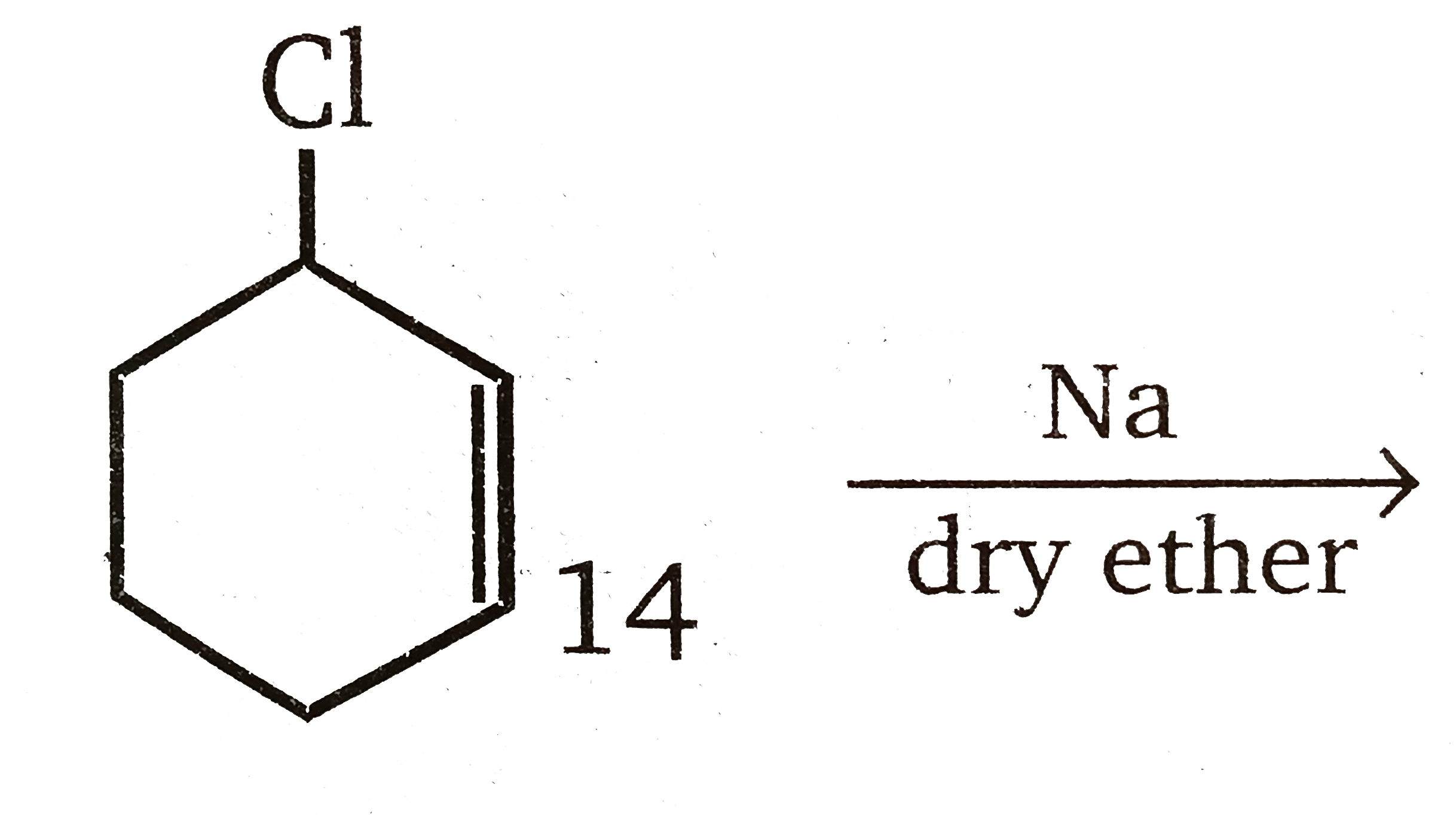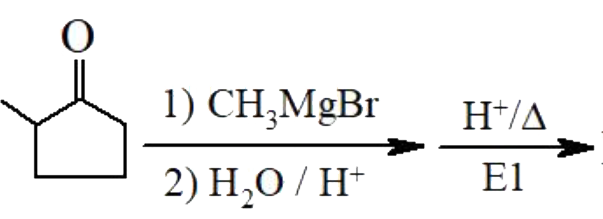CH3Br+CH3CH2BrNa/dry either−−−−−−−−→ product. Possible product in the above reaction . Solution in Telugu
CH3CH2CH
CH4
CH3CH2CH2CH3
CH2=CH2
The correct Answer is:A, B, C, D
This reaction following freedical mechanism ⋅CH3&CH3⋅CH2, are the intermediate freeradicals
⋅CH3+⋅CH3→CH3,⋅CH3+CH2CH3→CH3CH2CH3,
CH3⋅CH2+⋅CH2CH3→CH3CH2CH2CH3

CH3+CH3−CH3→CH4(b)+CH3−CH2
Topper's Solved these Questions
- BOOK - AAKASH SERIESCHAPTER - HYDROCARBONSEXERCISE - ADDITIONAL PRACTICE SHEET ( LEVEL-II (LECTURE SHEET (ADVANCED) (LINKED COMPREHENSION TYPE QUESTIONS(PASSAGE-I))))3videos
HYDROCARBONS
- BOOK - AAKASH SERIESCHAPTER - HYDROCARBONSEXERCISE - ADDITIONAL PRACTICE SHEET ( LEVEL-II (LECTURE SHEET (ADVANCED) (LINKED COMPREHENSION TYPE QUESTIONS(PASSAGE-II))))2videos
HYDROCARBONS
- BOOK - AAKASH SERIESCHAPTER - HYDROCARBONSEXERCISE - ADDITIONAL PRACTICE SHEET ( LEVEL-I (LECTURE SHEET (MAIN) (STRAIGHT OBJECTIVE TYPE QUESTIONS)))173videos
HYDROCARBONS
- BOOK - AAKASH SERIESCHAPTER - GENERAL ORGANIC CHEMISTRYEXERCISE - QUESTIONS FOR DESCRIPTIVE ANSWERS35videos
GENERAL ORGANIC CHEMISTRY
- BOOK - AAKASH SERIESCHAPTER - HYDROGEN AND ITS COMPOUNDSEXERCISE - QUESTIONS FOR DESCRIPTIVE ANSWERS20videos
HYDROGEN AND ITS COMPOUNDS
Similar Questions
Addition of HX on alkene proceed through formation of carbocation . This reaction is follows Markovnikov's rule. According to markovnikov's rule addition of electrophile occurs on that carbon of alkene which have more number of -H atom
Ph−CH=CH2−−→HXPh−x∣CH−CH3(major)+Ph−CH2−CH2−X(minor)
Which of the following alkenes can produce diastereomers02:58View SolutionHydroboration is a reaction in which the boron hydride acts as an electrophile, R2BH adds to a carbon - carbon double which acts as a nucleophile

Organoborane compound The organoborane compound then is oxidised by treatment with hydrogen peroxide in aqueous sodium hydroxide to from alcohol. The OH group enters the carbon atom from the same side where the boron atom was present. Hence this reaction is highly regioselective and the boron atom attacheto that carbon atom which is less sterically hindred.
 02:16View Solution
02:16View SolutionConsider the Diels Alder reaction, Diene +
 Adduct. For the above reaction which diene is most reactive ? 00:57View Solution
Adduct. For the above reaction which diene is most reactive ? 00:57View SolutionMention the hybridisation stste of each carbon in the following compounds.
CH3−CH=C=O,CH3−C≡C−CH3,CH3COCH3andCH2=CHCN02:14View SolutionWhy the use of hard water is disadvantages?
02:23View SolutionCH_(3)CH_(2)CH_(2)Cl+CH_(3)underset(Cl)underset(|)(C)HCH_(3)underset("dry ether")overset(Na)to Products. Which of te following is not a product of above reaction?
01:44View Solution Na−−−−−−−→dry ether(A), product (A) is:02:10View Solution
Na−−−−−−−→dry ether(A), product (A) is:02:10View SolutionNa(s)to overset("air"//Delta)to product. Product will be
03:51View SolutionIn the reaction , C_2H_5Br underset((ii)CuI)overset((i)Li)to "(X)" overset(CH_3Br)to (Y) , the products X and Y are ________ and ____________ respectively.
01:45View SolutionThe products of the following reactions is C_2H_5Br + 2Na+ CH_3Br underset"Propane"overset"dry ether"to ?
02:16View SolutionIn the reaction, 2nR-Xunderset("Dry ether")overset(+2n Na)to product The product obtained is
05:00View SolutionThe product 'C' in the following reaction is ________. CH_3Br overset( dil . KCN) to 'A' overset(H_3O^(+))to 'B' overset(LiAlH_4)to 'C'
03:47View Solution Products
Products
In the above reaction, number of possible alkenes (products) are01:38View SolutionWrite the formula of the main product formed in the reaction : (CH_(3))_(2)CHCl underset("Dry ether")overset(Na)to
01:19View SolutionWrite the formula of the main product formed in the reaction :
(CH3)2CHClNa−−−−−→Dry ether04:17View Solution

